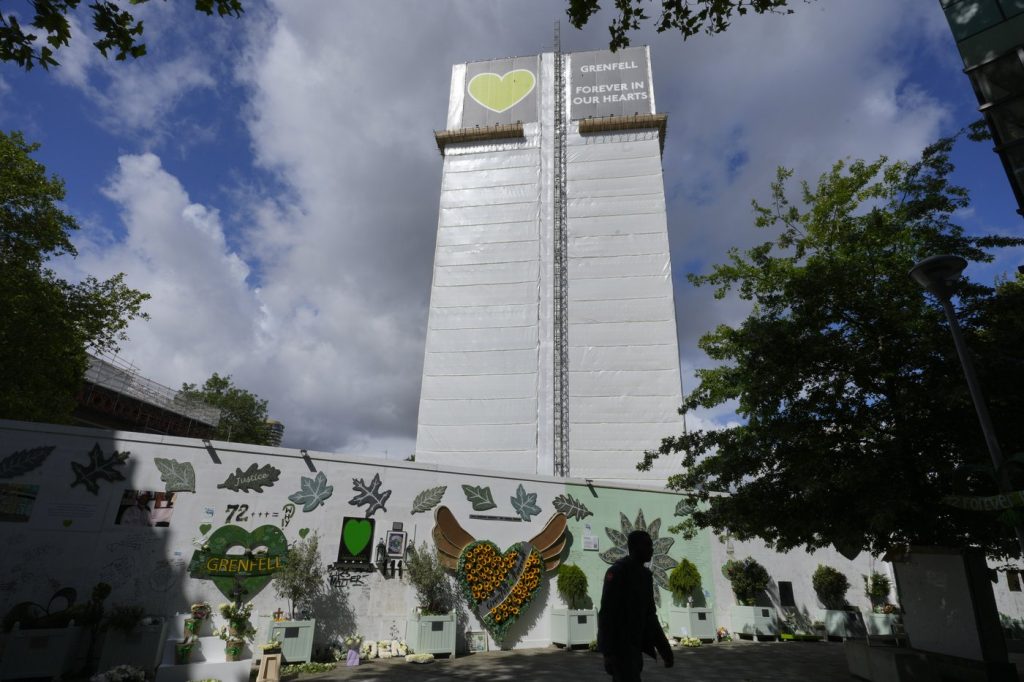LONDON (AP) – The decision to demolish the remnants of Grenfell Tower has sparked outrage among families who lost loved ones in the catastrophic fire that occurred on June 14, 2017. The inferno claimed the lives of 72 individuals and has left a haunting legacy in the North Kensington neighborhood of west London. Many bereaved relatives and survivors are advocating for the preservation of the shell of the 24-story apartment block as a permanent memorial to those who perished.
On Wednesday, Deputy Prime Minister Angela Rayner met with representatives from Grenfell United, a group advocating for the voices of the bereaved and survivors. They expressed frustration over what they perceive as the government's disregard for their opinions in the decision-making process regarding the tower's fate. Grenfell United publicly criticized Rayner, stating she could not provide a satisfactory explanation for the proposed demolition and did not share details about the consultation process that took place over a four-week period.
The towering remains of Grenfell Tower stand as a grim reminder of the deadly blaze that erupted due to a small kitchen fire, which rapidly spread, exacerbated by flammable cladding installed on the building. Some survivors view the structure as a fitting tribute to those lost, while others argue that redeveloping the site would be beneficial for the healing process of the community.
Government officials have remained tight-lipped about their demolition plans ahead of an official announcement expected on Friday. Previously, authorities had indicated that the Grenfell site would remain unchanged until at least the eighth anniversary of the fire in June 2025. This controversial decision has raised further questions about the government’s commitment to addressing the tragedy and its repercussions.
A public inquiry into the Grenfell disaster revealed a multitude of institutional failures spanning decades. It concluded that negligence from government bodies, regulatory bodies, and the construction industry turned Grenfell Tower into a “death trap.” The inquiry highlighted how a combination of dishonesty within corporations, inadequate regulation, and a lack of accountability from government entities contributed to the deadly consequences of the fire.
While the investigation identified no singular cause for the tragedy, it pointed to systemic issues that allowed the building to be enveloped in combustible material, which facilitated the spread of flames, making it the deadliest fire on British soil since World War II. This heartbreaking event and its aftermath continue to resonate within the community and beyond, as discussions around safety, accountability, and memorialization remain at the forefront of public concern.










